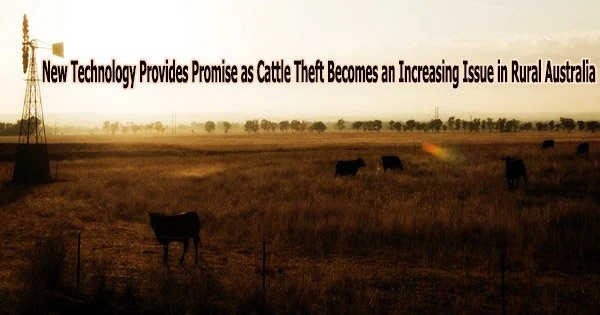In a highly organized rural crime ring, 700 sheep with a combined estimated worth of $140,000, including over 200 priceless merino ewes, were allegedly stolen from a Victorian property last week. Such large-scale rural theft is increasingly common.
Rural crime is not isolated to certain states. Instead, stock theft is a concern in Australia. Data from these massive thefts demonstrates that criminals exploit cross-state “corridors” to transport cattle and stolen rural property over long distances.
According to surveys done in Victoria and New South Wales, 70% and 80% of farmers, respectively, had been victims of agricultural crime at some point in their lives.
While there are many crimes that affect farmers, like trespass and unlawful shooting on their land, stock theft is one of the most frequent crimes they deal with.
The impact of “farm crime” is significant. The farming industry is crucial to Australia’s economy, and such crimes can have catastrophic effects on rural landowners, farmers, and local communities in terms of finances, mental health, and physical health.
Why does it happen?
Farming towns’ high rates of theft can be explained by distinct geographic and cultural characteristics that affect the frequency of crime and how it is dealt with.
Let’s consider geography in more detail. Rational choice theory suggests offenders make decisions to commit crimes by weighing the risks and rewards. The goal of crime prevention then is to increase risks and lower rewards.
For instance, in a big metropolis, crime prevention might involve devices like locks, motion detectors, or Cameras, while the numerous people going about their daily lives may deter criminals merely by their presence.
Crime may also be discouraged by the formal guardianship provided by the police or security personnel. By reducing hiding locations, exit points, and escape routes, the urban environment can also be developed and designed in a way to deter crime.
The rural environment flips all of this on its head. With the huge quantity of open area, it is frequently impossible to deploy typical crime prevention measures, and on a busy working farm, locks or gates are not always viable.
Because of the low population density, there aren’t many “eyes in the paddock” to report and prevent crime. With slower reaction times than in urban areas, there is even less of a formal police presence.
The environment itself is also less conducive to crime prevention through environmental design due to limited and spread-out infrastructure combined with a myriad of access points.
When we add all of this together, the risk-reward calculation for committing crimes such as stock theft in rural areas is often very favorable to offenders.
What can we do about it?
Innovations in policing and agricultural technology appear to offer some promising progress to combat farm crime.
The NSW Police have a dedicated Rural Crime Prevention Team. It is made up of officers who have the requisite education, training, abilities, and experience to deal with agricultural crime as well as cultural and practical knowledge of rural industry.
This team has used cutting-edge tactics to combat rural crime, and their work has helped raise public opinion of the police while, most crucially, encouraging farmers to report rural crime.
Despite this, police are still operating in an environment that presents serious difficulties in preventing, investigating and clearing farm crime.
There are two key issues at work. The first is that farmers may check on stock only intermittently, and so be unaware of a theft for some time. The second is difficulty in tracking and identifying stolen stock.
New technology offers some solutions here. The Centre for Rural Criminology (UNE) staged a mock theft of livestock, with a live police intervention, to evaluate the ability of a smart animal ear tag to combat stock theft. The results were very promising.
Within minutes of the robbers entering the paddock, the farmers were informed of the stock theft using the movement and location data provided by the tag. This enabled a rapid and effective response and recovery by the police.
By utilizing minute changes in the form and pattern of their muzzle, which are as distinctive as a human fingerprint, another innovative method uses face recognition to identify stock.
Farmers can use a smartphone or tablet to take pictures of their livestock, which they can then send to a cloud platform with AI to identify the animals. In a perfect world, law enforcement would be able to identify stolen cattle using this picture recognition technology and deliver them back to their owners.
The theft of stock is a serious and growing problem in Australia. Farmers, rural communities, and the Australian economy suffer as a result of the rising frequency of large-scale and sophisticated thefts.
New agricultural technologies and committed policing initiatives may raise the stakes for committing farm crimes and turn the tables on the perpetrators.
















